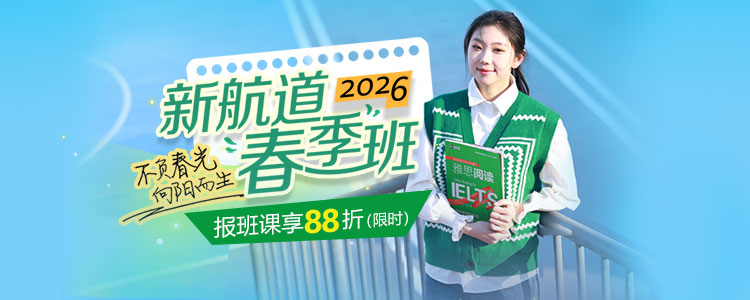2019年8月31日雅思考试阅读真题回忆
今天上海新航道雅思培训班 小编为大家整理了2019年8月31日雅思考试阅读真题回忆,每次考试后新航道雅思 小编会在1-2天内更新托福机经回忆
需要2019雅思考试机经的烤鸭们可以关注新航道雅思机经 频道!
Passage 1
Topic 奥林匹克火炬
Content Review
A Every two years, people around the world wait in anticipation as a torch-bearing runner enters the Olympic arena and lights the cauldron. The symbolic lighting of the Olympic flame marks the beginning of another historic Olympic Games. The opening ceremony is the end of a long journey for the Olympic torch. The ancient Greeks revered the power of fire. In Greek mythology, the god Prometheus stole fire from Zeus and gave it to humans. The Greeks held their first Olympic Games in 776 B. C. The Games, held every four years at Olympia, honored Zeus and other Greek gods.A constantly burning flame was a regular fixture throughout Greece.At the start of the Olympic Games, the Greeks would ignite a cauldron of flame upon the altar dedicated to Hera, goddess of birth and marriage.
B The flame was reintroduced to the Olympics at the 1928 Amsterdam Games. A cauldron was lit, but there was no torchrelay.
The first Olympic torch relay was at the 1936 Berlin Summer Games and it was not introduced to the Winter Olympics until the 1952 Games. It was lit that year not in Olympia, Greece, but in Norway, which was chosen because it was the birthplace of skiing. But since the 196401ympics at Innsbruck, Austria, every Olympic Games - Winter and Summer - has begun with a torch-lightingceremony in Olympia, Greece, followed by a torch relay to the Olympic stadium.
Designing an Olympic Torch
C The torch starts out as an idea in the mind of a designer or groupof designers. Several design teams submit proposals to the Olympic Committee for the opportunity to create and build the torch. The team that wins the assignment will design a torch that is both aesthetically pleasing and functional. A torch can take a year or two to design and build. And once the torch has been built, it must be tested rigorous^ in all kinds of weather conditions. The look of the modem Olympic torch originated with John Hench, a Disney artist who designed the torch for the 1960 Winter Olympics in Squaw Valley, California.His design provided the basis for all future torches. Since then, designers have tried to create a torch that represents the host country and the theme for that Olympic Games.
D The torch must then be replicated and replicated. It's not just one torch making the journey to the Olympic stadium; it's thousands. Anywhere from l0, 000 to 15, 000 torches are constructed to accommodate the thousands of runners who carry them through each leg of the Olympic relay. Each runner has the opportunity to purchase his torch at the end of his leg of the relay.
Olympic Torch fuel
E The first torch used in the modem Olympics (the 1936 Berlin Games) was made of a thin steel rod topped with a circular piece from which the flame rose. It was inscribed with a dedication to the runners. The torch must stay lit for the entire length of its journey. It must survive wind, rain, sleet, snow, and a variety of climates (desert, mountain, and ocean). For fuel, early torches burned every thing from gunpowder to olive oil. Some torches used a mixture of hexamine (a mixture of formaldehyde and ammonia) and naphthalene (the hydrogen- and carbon-based substance in mothballs) with an igniting liquid. These substances weren't always the most efficient fuel sources, and they were sometimesdangerous. In the 1956 Games, the final torch in the relay was lit by magnesium and aluminum, burning chunks of which fell from the torch and seared the runner's arms. The first liquid fuels were introduced at the 1972 Munich Games. Torches since that time have carried liquid fuels - they are stored under pressure as a liquid, but burn as a gas to produce a flame. Liquid fuel is safe for the runner and can be stored in a lightweight canister. The torch designed for the 1996 Atlanta Summer Olympics has an aluminum base that houses a small fuel tank. As fuel rises through the handle, it is pushed through a brass valve with thousands of tiny openings. As the fuel squeezes through the small openings, it builds pressure.Once it makes it through the openings, the pressure drops, and the liquid fuel turns into a gas for burning. The tiny holes maintain a high pressure in the fuel to keep the flame going through harsh conditions.
F The 1996 torch was fueled by propylene, which produced a bright flame. But because propylene contains a high level of carbon, it also produced a lot of smoke - not a plus for the environment. In 2000, the creators of the Sydney Olympic torch came up with a more lightweight, inexpensive, and environmentally friendly design. To fuel their torch, they decided on a mixture of 35 percent propane (the gas used to heat home stoves and barbecue grills) and 65 percent butane (cigarette lighter fuel), which ignites a strong flame without making a lot of smoke. Because the propane/butane mixture can be stored as a liquid under relatively light pressure, it can be kept in a lightweight container. It then burns as gas under normal atmospheric pressure. The liquid fuel is stored in an aluminum canister located about halfway up the torch. It flows up to the top of the torch through a pipe. Before leaving the pipe, the liquid fuel is forced through a tiny hole. Once it moves through the hole, there is a pressure drop, causing the liquid to turn into gas for burning. The torch moves the liquid fuel at a consistent rate to the burner, so the flame always bums with the same intensity. The torch can stay lit forabout 15minutes.
G The engineers behind both the 1996 and 2000 torches adopted a burner system that utilized a double flame, helping them to stay lit even in erratic winds. The external flame bums slowly and at a lower temperature than the internal flame. This flame is big and bright orange, so it can be seen clearly; but it is unstable in winds. The interior flame burns hotter, producing a blue flame that is small but very stable, because its internal location protects it from the wind. It would act like a pilot light, able to relight the external flame should it go out.
H When the 2002 Olympic Torch, in Salt Lake City, the top section was glass, and the Olympic Flame burned within the glass, echoing
the 2002 Olympic theme Light the Fire Within. The glass stood for purity, winter, ice, and nature. Also inside the glass was a geometric copper structure which helped hold the flame. The two silver sections also mirrored the blue/purple colors of the Fire and Ice theme.
1-3 为填空题
Write your answers in boxes 1-3on your answer sheet
The Olympic torch, as Olympic Committee requested, is carefully
designed which takes a years to design and build so that it is
capable of with standing all kinds of 1 climates and staying lit
through widely differing weather conditions. The torch used in the modern Olympics which is to hold the 2 flame And the torch must then be copied and thousands are built as demanded by the
thousands of runners who carry them through Each runner has the
opportunity to 3 purchase his torch at completion of his journey of the relay for memorial and as for souvenirs
4-9 为匹配题
Match the following statements as applying to different Olympic
flames A-H
A ancient Greek Olympic flames
B Berlin Games torch(1936)
C 1952 winter games flame
D 1956 Games torch
E Munich Games torch(1972)
F 1996 torch (Atlanta)
G 2000 torch(Sydney
H 2002 torch (Salt lake city)
Write your answers in boxes 4-9 on your answer sheet
4 first liquid fuel torch---E
5 not environmentally friendly---F
6 began to record the runners name---B
7 potential risky as it burnt runner's arms---D
8 special for a theme---H
9 flame not lit in Greek---C
Qustions 10-13
10 fuel tank coated by aluminum
A bras valve with many small 11 opening
Pressuised fuel rises from the improved 12 handle
The liquid fuel mix of 13 propylene stored in
Passage 2
Topic 农场主Content Review
The Farmers! parade of history A History of Farmer rading company: In 1909 Robert Laidlaw establishes mail-order company Laidlaw Leeds in Fort Street, Auckland. Then, Branch expansion: purchase of Green and Colebrook chain store, further provincial stores in Auckland and Waikato to follow. Opening of first furniture and boot factory. In 1920, Company now has 29 branches; Whangarei store purchased. Doors open at Hobson Street for direct selling to public. Firm establishes London and New York buying offices. With permission from the Harbour Board, the large FARMERS electric sign on the Wyndham Street frontage is erected.
B IN 1935, if the merchandise has changed, the language of the catalogues hasn‟t. Robert Laidlaw, the Scottish immigrant who established the century-old business, might have been scripting a modern-day television commercial when he told his earliest customers: Satisfaction, or your money back. “ It was the first money back guarantee ever offered in New Zealand by any firm, ” says Ian Hunter, business historian. “ And his mission statement was, potentially, only the second one ever found in the world.”Laidlaw‟ s stated aims were simple to build the greatest business in New Zealand, to simplify every transaction, to eliminate all delays, to only sell goods it would pay the customer to buy.
C This year, the company that began as a mail-order business andnow employs 3500 staff across 58 stores turns 100. Its centenary will be celebrated with the release of a book and major community fundraising projects, to be announced next week. Hunter, who is writing the centenary history, says“coming to a Farmers store oncea week was a part of the New Zealand way of life”. By 1960, one in every 10 people had an account with the company. It was the place where teenage girls shopped for their first bra, where newlyweds purchased their first dinner sets, where first pay cheques were used to pay off hire purchase furniture, where Santa paraded every Christmas.
D Gary Blumenthal‟s mother shopped there, and so does h e. The fondest memory for the Rotorua resident? “We were on holiday in
Auckland ... I decided that up on the lookout tower on top of the Farmers building would be a unique place to fit the ring on my new fiancée‟s finger.” The lovebirds, who had to wait fo r “an annoying youth” to leave the tower before they could enjoy their engagement kiss, celebrate their 50th wedding anniversary in June.
14-18 为细节匹配题
14 Generosity offered in an occasion for helping the poor---E
15 Innovation of offer made ahead of modern-time business by the
head of company.---B
16 Fashion was not chosen as its strong point---G
17 A romantic event on a memorial venue dedicating to
Farmers---G
18 Farmers was sold to a private owned company.---I
19-23 为填空题
19 Farmers was first founded as a 19 mail-order company in
Auckland by mr Laidlaw.
20 Farmers developed fast and bought one 20 chain store then
21 During oversea expansion, Farmers set up 21 buying offices In
major cities outside New Zealand
22 Farmers held a 22 celebration in a sale once a year for the
company’s mascot animal
23 Some senior employee considered Farmers as a23 big familyboth for themselves and for the whole count
24-26 为匹配题
A Lincoln laidlaw B Rod McDermott C Ian hunter
24 Product became worse as wrong aspect focused---B
25 An unprecedented statement made by Farr New Zealand---C
26 Character of the company was changed---A
Passage 3
Topic 蚂蚁类昆虫
Content Review
暂缺









